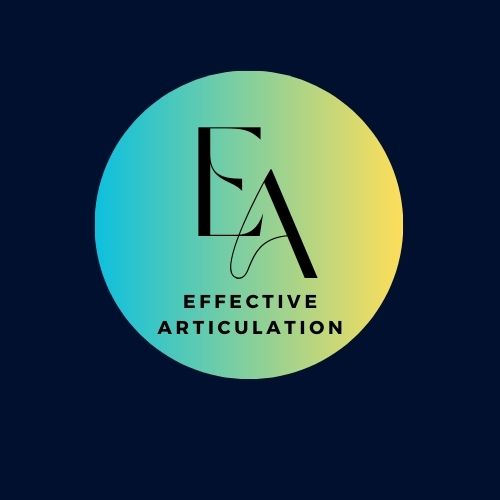Taking the TED stage is a dream for a lot of people. It’s a pretty great shot at sharing an idea that matters, with a global audience hanging onto your every word.
But if you’re feeling nervous about how to get ready for a TED Talk, you’re not alone. Prepping for a high-stakes talk takes more than just writing a strong script. It’s about crafting your message, rehearsing smartly, and finding ways to deliver like a pro, even if you’ve never stood in that bright red circle before.
This guide breaks down what actually helps TED speakers feel confident and prepared.
After reading, you’ll have a clear, step-by-step plan and know exactly how to approach your own TED Talk prep without feeling overwhelmed. Think of these tips as the kind of inside scoop TED coaches share behind the scenes.
Step 1: Pin Down Your Big Idea
The best TED Talks all start with one clear, focused idea. If your message is too broad or tries to squeeze in too much, you’ll lose your audience quickly. Instead, narrow it down to a single core point and build everything else around it. This simple approach makes your theme stand out and gives your talk a strong backbone.
Questions to Clarify Your Message:
- What’s the one thing you want people to remember?
- Is your idea surprising, new, or a fresh take on something familiar?
- What problem does it address, and why does it matter?
- Can you explain your idea in a single, short sentence?
Simple Examples of TED-Style Big Ideas:
- “Vulnerability is a strength, not a weakness.”
- “Education should encourage creativity, not just compliance.”
- “Rest is productive.”
Having a solid, focused idea makes your prep way easier and keeps your talk from going off track. It also ensures every story and points you share connects directly to what matters most.
How to Articulate your thoughts Effectively?
Step 2: Outline and Structure Your Talk
TED Talks flow naturally because speakers organize their ideas in a way that’s easy for everyone to follow. It’s not about scripting every word just yet. Start with a straightforward outline that organizes your ideas into a clear beginning, middle, and end.
Basic TED Talk Outline:
- Hook: Kick off with a story or question to grab attention.
- Content: Share your adventure, research, or discoveries, and back them up with evidence or stories.
- Takeaway: End with a clear, memorable message or call to action.
Tips to Shape Your Outline:
- Use personal stories or real examples. Audiences connect best with something authentic.
- Stick to three or four main points or stories to avoid overwhelming listeners.
- Throw in a few questions that get your audience thinking after your talk wraps up.
Once you like the structure, you’ll find it easier to write your script and fill in the details. A clean outline means your talk flows smoothly and keeps listeners hooked from start to finish.

Step 3: Write an Authentic, Conversational Script
Your script should sound like you, not a textbook or academic paper. The TED team loves talks that feel real, personal, and easy to follow. Don’t worry about fancy language or perfect grammar. Instead, keep your language straightforward and true to your everyday style.
Script Writing Tips That Work:
- Picture yourself telling your story to a friend, not a packed theater.
- Read the script out loud as you write to spot awkward phrasing or stiff sentences.
- Aim for clarity, not just cleverness; people can’t replay live talks.
- Mix up your sentence length for a natural, easygoing flow.
Script Pitfalls to Watch For:
- Packing in too much information—leave space for your audience to reflect.
- Using technical jargon that might confuse non-experts.
- Leaving out your own voice or emotional connection.
As you refine your script, remember: simplicity and honesty always win. Your genuine viewpoint will cut through the noise and help your idea land.
Step 4: Rehearse Like You Mean It
Even seasoned speakers practice TED Talks dozens of times. Practice is about more than just memorizing your script; it’s about sounding natural, working out any awkward sections, and building real confidence before you step into the spotlight.
How To Practice Effectively:
- Start by reading your script out loud alone, getting comfortable with your wording.
- Record yourself with your phone and watch for pacing, tone, and gestures.
- Practice standing up and moving as you talk. On stage, body language matters just as much as your words.
- Practice with a friend or family member and ask for honest feedback—focus on what feels engaging and what needs work.
Extra Practice Tips:
- Focus your time on the opening and ending—first and last impressions really matter.
- Time yourself to be sure you don’t go over your allotted window.
- If you stumble or forget a spot, keep moving. Most people won’t notice a brief hesitation unless you draw attention to it.
Step 5: Prepare for Nerves and Stage Presence
Feeling nervous is totally normal, even for seasoned speakers. What matters is having solid strategies to handle nerves so they don’t take over when you step on stage.
Stage Presence Basics:
- Pause before you speak. Let that quiet moment settle the room.
- Pick a spot where you feel comfortable, then move with clear purpose when you want to connect with another part of the crowd.
- Use hand gestures naturally, avoiding constant movements that could distract.
- Make eye contact with a few different spots in the audience, not just the nearest row.
- Smile or breathe deeply to center yourself in the moment before you start.
Quick Tricks to Calm Nerves:
- Try a “power pose” backstage—stand tall, hands on your hips, or arms raised. Hold it for a minute to build confidence.
- Take three slow, controlled breaths before stepping onto the circle. This quick ritual helps clear your mind.
- Remind yourself: perfection isn’t the goal; real connection is. People love honest, human moments.
If you notice your nerves bubbling up, focus on the big idea you want to share and the impact it could have. That excitement can help shift jitters into positive energy.
Step 6: Polish Visuals and Slides (If needed)
Some TED speakers use slides or props, but only if they truly give a boost to the story. If you use visuals, keep them minimal. The audience should be listening to you, not reading a crowded slide deck. Simple slides with bold images or stats have much more impact than a wall of text.
Visuals That Actually Help:
- Stick to one idea per slide; keep words to a minimum.
- Make images or data visuals large and clear so even the back row can see.
- Ask yourself if you’d miss the info if the slide disappeared. If not, cut it.
If you’re not sure whether to use a slide, try rehearsing both ways. The most effective visuals support your point without pulling focus off your message.
Best Public Speaking Courses for Beginners
Become a better speaker today!
Common Questions & Troubleshooting TED Talk Prep
What if I forget my lines on stage?
Pause, take a steady breath, and pick up where you left off. Most audience members won’t notice a quick pause. You can always paraphrase. TED organizers care much more about your big idea than perfect wording.
How do I handle questions or feedback after my talk?
- Listen first—sometimes folks just want to clarify or share their thoughts.
- If you don’t know the answer, it’s fine to say so. Offer to follow up later if you like.
- Some TEDx events don’t include Q&A, so check your event guidelines ahead of time.
Do I need a memorized script?
TED Talks shouldn’t sound like a recited monologue. The goal is to know your material so well you can share it naturally, with or without notes.
Ready for Your Moment: Action Steps
Prepping for a TED Talk isn’t just about hard work; it’s about following focused steps that help you show up as your real self. The more personal and honest your talk feels, the more it’ll resonate with your audience. Every TED Talk is unique, but the preparation steps are similar for everyone.
Your Game Plan:
- Distill your big idea to one clear sentence. This will be your anchor throughout the process.
- Draft an outline and script using your own voice and stories, not someone else’s style.
- Rehearse and refine your delivery; try practicing in different settings for variety.
- Test visuals (if you use them) to ensure maximum clarity and impact, not just decoration.
- Build confidence with simple stage presence and deep breathing. Set yourself up for a strong start.
Nailing your TED Talk takes dedication, but these steps will help you feel ready to share your idea with real confidence. If you’re gearing up for a talk, I’d love to hear what topic you’re tackling and how your prep is coming along. Drop your thoughts below or share your favorite TED Talks that inspire you, and let’s keep helping each other bring great ideas to the world!
If you found this post helpful, don’t forget to share it with a friend who could use a little articulation boost!Disclosure: If you click on the affiliate links provided in this article and purchase the product, I will receive a commission from the company of the product. You will not pay anything extra for your purchase. You can read the affiliate disclosure for more information.



9 thoughts on “A Step-by-Step Guide To Preparing For A TED Talk”
Hello Kavitha,
This was a solid and no-nonsense breakdown of what it really takes to prepare for a TED Talk — thanks for that. I’ve come across so many vague “inspirational” guides that say things like “speak from the heart” without giving any real steps, but your article actually delivers structure. I especially liked your focus on refining the message before worrying about how to perform it. That’s where most people get it backwards.
The reminder to start with one clear idea is painfully relevant. I’ve sat through more talks than I care to admit where the speaker clearly had three ideas competing for attention — and none landed. Your step-by-step process seems designed to avoid that trap, and I respect that.
Also, the part about rehearsing for real, not just in your head — thank you for that reality check. Reading something five times isn’t the same as standing up and saying it out loud with shaky hands and weird lighting. It makes all the difference.
That said, I was curious: do you have experience helping speakers tailor their TEDx talks for different types of audiences — like academic vs. corporate vs. general public? I imagine the “one idea worth spreading” has to be shaped a bit differently depending on who’s watching.
Anyway, great piece — you managed to be clear without being condescending, which is rare in this space. Looking forward to what’s next on your blog.
Have a great day!
Farid
I loved your article on preparing for a TED Talk! You nailed it when you emphasized starting with a single “big idea” and building everything—the hook, stories, visuals—around it, making the whole prep feel so much more focused. And your reminder to rehearse with mindset, body language, even power poses? That really brings the human side to such a high‑stakes moment. Out of curiosity, when someone’s practicing, do you have a favorite trick to help them connect emotionally with the audience—like through storytelling or a specific gesture? And do you recommend recording every rehearsal, or are there moments when it’s better to go off‑script and just vibe?
Thank you so much for your thoughtful feedback!
I’d say storytelling is the best way to connect emotionally, and yes, record most rehearsals but always leave room to improvise and keep it authentic.
Hi Kavitha,
I read your blog post with interest, as I joined Toastmasters last month, and I am due to give my first icebreaker speech soon. I have bookmarked your site as is a very good blueprint for giving a speech. I found your tips for coping with nerves very useful. Nerves are my main concern as a beginner. Being familiar with the speech content is also very important.
Thank you for your help.
Cheers John
Sure John! Thank you
The article offers a clear and practical step-by-step guide that effectively demystifies the process of preparing for a TED Talk. By breaking down the daunting task into manageable phases—from identifying a core message to incorporating storytelling and practicing delivery—it provides a valuable roadmap for aspiring speakers. The emphasis on authenticity and research is particularly strong, as these elements are crucial for a talk to be both credible and genuinely engaging. The guide’s structure makes it highly accessible for anyone, regardless of their public speaking experience.
Thanks so much! I’m glad the step-by-step breakdown felt practical, authenticity and research truly are what make a talk resonate.
One thing that stood out to me is how much preparation shapes confidence on stage. From my own experience giving shorter talks, I’ve noticed that rehearsing in front of small groups helps uncover weak points I’d otherwise miss. Do you think practicing in front of strangers versus friends creates a more authentic TED-like pressure? I also wonder how much emphasis should be placed on storytelling compared to data-driven points, since balancing the two has always been a challenge for me. Personally, I feel that a strong emotional hook at the beginning makes the rest of the talk flow more naturally, but sometimes I struggle to keep that same level of energy until the end.
Great point! Practicing in front of strangers definitely mimics real pressure better, while friends help you refine delivery safely. Storytelling paired with data works best when the story anchors the facts, keeping both engaging and credible.